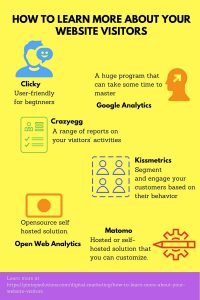In a world of multiple channels and devices, how do you make the right story matter to the right people? Columnist James Green offers some guidance.

Everyone loves a great story — a story that quickly captures your attention, keeps you engaged and speaks directly to you. Today, there is no shortage of information shared between brands and consumers. And although there might appear to be an overload of information, marketers are the ones responsible for building great stories to pique our interest and influence our decisions as consumers.
With the adoption of digital, marketers have a unique opportunity to build their story across channels and devices and tailor it to different audiences.
People tend to remember stories better than a single message. As Rudyard Kipling once claimed, “If history were taught in the form of stories, it would never be forgotten.” The same notion applies in the world of marketing.
Know Your Audience Using Data
Entertainers are frequently advised to “know their audience” before performing. Information resonates best with people who understand it and find it meaningful.
In the digital storytelling universe, this means that a mother in the market for a low-cost vehicle might be told a different story than a single person who has similar budget constraints — both might be interested in the same car, but the way it’s presented should be different.
Digital allows marketers to treat everyone as individuals. In order to understand your audience and deliver stories that matter to them, you need to look at a combination of first- and third-party data.
Telling meaningful stories is not necessarily about having big data; instead, it’s about having the right combination of data to give you the best perspective of your audience.
Digital got a bad rap early on when a majority of digital advertising consisted of display banner ads. Traditional display advertisements are still growing 16 percent a year and are boosted by the revolution in programmatic buying, according to a recent ZenithOptimedia study. All in all, Internet display will reach close to $75 billion by 2016 — which is no drop in the bucket.
But as consumers’ habits change, so will the implications surrounding display advertising. Display is undergoing a mass reconstruction; new channels and creative formats are redefining it, ranging from static to animated and interactive in the form of rich media, online video and native advertising.
Make Your Message Matter On All Channels And Devices
However, it’s not enough for a marketer to just target you with a single message or display ad (interactive or not), because one message simply can’t tell the whole story. Marketers should build stories that reach people with the information that matters to them wherever they engage — across different channels and devices.
Sequential advertising is nothing new. We’ve seen this in traditional channels over the years where a brand may start with a series of teaser ads and finally unleash the main event on television.
In digital, sequential advertising is much richer — you can optimize your story in real-time, choose the best channels, adapt the creative for the audience, and so forth.
Great digital stories should be able to end on one device and pick up on another.
To put this into perspective, my favorite ski equipment brand, Blizzard, is introducing a new line of skis. They may know I am in their target audience based on my previous search activity for ski vacations in exotic locations and excessive purchasing of skiing gear, in addition to my past purchase history, which indicates I purchased a new helmet in the last 30 days.
The campaign is designed to tell me a story about how amazing this new set of skis will be for my next vacation. I might be engaged by an email, followed by an ad on my desktop, and then receive a native advertisement on my smartphone.
Blizzard might even sweeten the story by optimizing content based on actions that I take along the way. Within the retailer’s site, I may watch an online video and eventually, if the story resonates, make my purchase.
Engage And Adapt
The most engaging stories are multi-dimensional and span across a series of communications and channels. Ensuring that your creative and communication is adaptable and relevant for a variety of screens and channels is imperative to building a meaningful story for the right people.
As confusing as disruptive technological advancements in display advertising may be for marketers, these progressions have opened a wealth of opportunities for marketers to do what we do best — storytelling.
Some opinions expressed in this article may be those of a guest author and not necessarily Marketing Land. Staff authors are listed here.
(Some images used under license from Shutterstock.com.)
Marketing Land – Internet Marketing News, Strategies & Tips
(270)
Report Post









